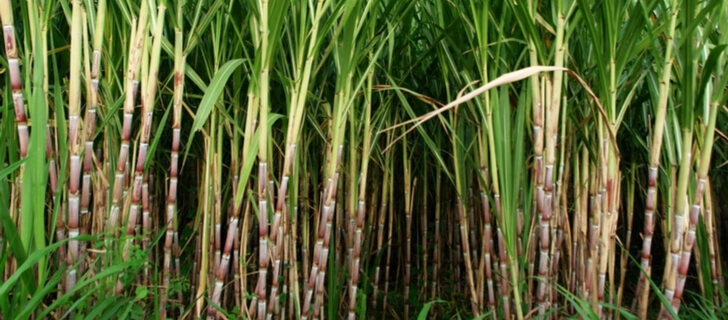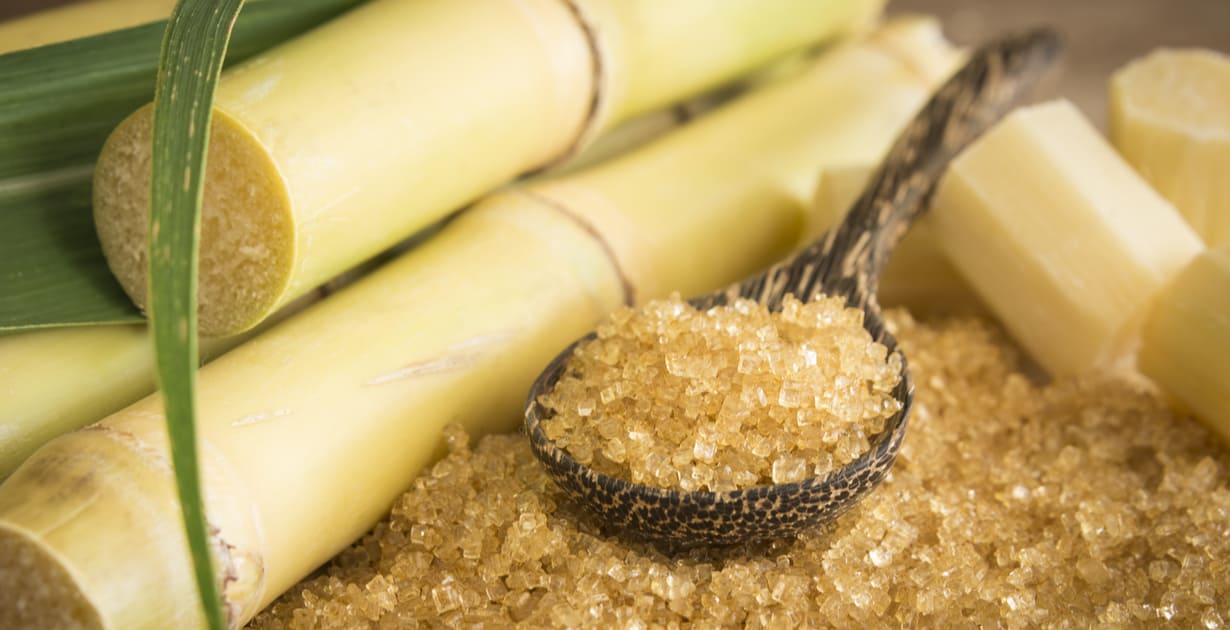What Are Sugar Canes Used For in Sugar-Free and Vegan Foods
All Concerning Sugar Canes: What Are Sugar Canes Utilized For and Their Duty in Worldwide Farming?
Sugar canes work as a keystone of worldwide agriculture, mostly acknowledged for their function in sugar manufacturing. They likewise add to the creation of by-products like molasses and ethanol. These aspects not just support different sectors yet likewise impact financial security in rural areas. The farming of sugar walking canes faces significant environmental difficulties. Recognizing their multifaceted role triggers further expedition into their agricultural techniques and sustainability initiatives.
The Agricultural Refine of Sugar Walking Cane Cultivation
Although sugar walking stick farming may differ by area, the fundamental agricultural procedure continues to be constant. The very first step entails picking high-yielding selections ideal for neighborhood environments. Prep work of the dirt is essential, commonly requiring tillage and the enhancement of fertilizers to improve fertility. Growing generally takes place throughout the rainy season, with farmers using either whole stalks or cuttings to establish new crops.As the plants grow, they require thorough treatment, consisting of weed control, parasite administration, and irrigation, relying on the environmental conditions. Farmers monitor the sugar walking stick's growth cycle, which normally spans 10 to 24 months, prior to gathering. Harvesting is labor-intensive, typically performed manually or with specialized equipment, making certain marginal damage to the stalks. Adhering to harvest, the walking stick is transferred to processing facilities. This thorough cultivation procedure not only sustains local economies however additionally plays a significant function in worldwide agricultural practices, adding to food and energy products.
Sugar Manufacturing: From Cane to Crystal
The trip of sugar manufacturing starts the minute newly harvested sugar walking stick shows up at processing facilities. The very first step includes washing and chopping the walking cane to prepare it for extraction. Using high-pressure rollers, the juice is removed from the crushed cane, causing a sweet fluid called sugarcane juice. This juice goes through information, where contaminations are removed via the enhancement of lime and heat.Next, the clarified juice is concentrated by steaming it down to develop a thick syrup. This syrup is after that crystallized by cooling down, making it possible for sugar crystals to form. The taken shape sugar is divided from the continuing to be syrup, called molasses, with centrifugation.Finally, the sugar crystals are washed and dried out, leading to the acquainted granulated sugar (What Are Sugar Canes Used For). This process changes raw sugar walking cane into an item that is indispensable to numerous cooking and commercial applications, highlighting the importance of sugar in worldwide farming
Biofuels and Sugar Canes: A Lasting Future
As the globe increasingly looks for lasting power options, sugar canes have arised as an appealing resource for biofuels. The biomass acquired from sugar canes can be exchanged ethanol, a renewable fuel alternative that noticeably decreases greenhouse gas emissions contrasted to fossil fuels. This procedure not just offers a cleaner energy resource but likewise promotes power self-reliance for lots of countries.In addition, sugar walking stick farming sustains country economic situations by creating jobs in both farming and biofuel production fields. Making use of sugar walking sticks for biofuel manufacturing also encourages agricultural diversity, which can improve soil health and minimize dependency on single crops. Additionally, the byproducts of sugar walking cane handling can be made use of for power generation, in addition adding to a lasting power cycle. As nations endeavor to fulfill renewable resource targets, sugar walking sticks are positioned to play an important function in shaping a more sustainable future in the biofuel landscape.

The Duty of Sugar Canes in Beverage Manufacturing
Sugar walking canes play a significant function in beverage manufacturing, acting as a main ingredient in rum and adding to the sweet taste of many sodas. Additionally, their natural juices are utilized in different beverages, enhancing taste and appeal. This adaptability highlights the importance of sugar walking sticks in the global beverage market.
Sugar Cane in Rum
Rum production is delicately linked to the growing of sugar cane, an essential crop that offers the essential fermentable sugars needed for fermentation. This process begins with the extraction of juice from collected sugar walking sticks, which is after that either fermented straight or refined right into molasses. Yeast is included to convert the sugars into alcohol, resulting in a diverse variety of rum designs, from light to dark selections. The geographical area where the sugar walking stick is grown significantly affects the flavor profile of the rum, with elements such as dirt type and climate playing crucial functions. Nations like Barbados, Jamaica, and Cuba are renowned for their rum production, showing the historic and social relevance of sugar walking cane within the global drink industry.
Soft Drinks Sugar Source

All-natural Juice Production Makes Use Of
Along with its substantial function in soft beverage production, sugar walking cane is additionally pivotal in the all-natural juice sector. The juice removed from sugar cane, referred to as cane juice, is celebrated for its natural sweet taste and distinct taste profile. This juice is commonly eaten fresh in various areas, specifically in tropical countries, where it is enjoyed as a rejuvenating drink. In addition, walking cane juice functions as a base component in an array of natural fruit juices and smoothie mixes, enhancing both preference and dietary worth. Its natural buildings make it an eye-catching alternative to synthetic sweeteners, appealing to health-conscious consumers. In general, sugar walking stick's convenience in juice production underscores its significance in contemporary drink offerings worldwide.
Developments in Sugar Walking Cane Byproducts
Developments in sugar walking stick by-products are leading the means for sustainable services in different markets. Biofuels stemmed from sugar cane offer an alternative energy resource, while advancements in lasting packaging are minimizing reliance on traditional products. These growths highlight the convenience and capacity of sugar walking cane past its key use in beverage production.
Biofuels From Sugar Walking Stick
How can the byproducts of sugar walking cane add to sustainable energy solutions? The conversion of sugar walking cane into biofuels presents a promising method for sustainable energy. By making use of the coarse residue, recognized as bagasse, manufacturers can create bioethanol with fermentation processes. This bioethanol can act as a sustainable choice to fossil gas, decreasing greenhouse gas emissions and reliance on non-renewable resources. In addition, molasses, another result, can be fermented to create biofuels, making the most of source effectiveness. The energy generated from sugar cane not only supplies a cleaner gas source but likewise boosts the general financial feasibility of sugar production. By incorporating biofuel manufacturing right into their procedures, sugar walking stick sectors can play a necessary role in progressing sustainable energy remedies internationally.
Sustainable Product Packaging Solutions
Lasting packaging options are increasingly being established from sugar walking cane byproducts, showcasing the convenience of this agricultural staple. Advancements such as biodegradable plastics stemmed from bagasse, the fibrous deposit left after juice extraction, are obtaining grip. These materials provide an eco-friendly option to traditional plastics, lowering reliance on fossil fuels and reducing carbon impacts. In addition, sugar cane-based product packaging is compostable, breaking down naturally without hurting the environment. Companies are now exploring these alternatives to straighten with customer demand for sustainability. As recognition of plastic contamination grows, the adoption of sugar cane-derived product packaging is expected to rise, placing sugar walking canes as an essential player in the change to greener product packaging solutions in various industries.
Economic Impact of Sugar Walking Stick Farming

Sugar cane farming has deep origins in lots of economic climates, its economic influence prolongs far past agricultural production. This plant functions as a considerable income for countless farmers worldwide, particularly in developing nations where farming is a primary livelihood. Sugar walking stick contributes to regional economic situations through work development in cultivation, harvesting, and handling. The industry additionally stimulates growth in relevant industries such as transport, devices manufacturing, and food processing.Furthermore, sugar walking cane is a principal in international profession, influencing worldwide markets and click reference rates. Countries that produce sugar walking cane commonly count on exports to enhance their economic security. The by-products of sugar cane, such as ethanol and molasses, see this here expand revenue streams for farmers and add worth to the farming field. Overall, the economic implications of sugar walking cane farming are extensive, impacting not only farmers however additionally whole areas and national economic climates.
Environmental Considerations in Sugar Cane Farming
While sugar cane farming plays a vital duty in several economic situations, it likewise raises substantial ecological issues that can not be overlooked. The considerable use fertilizers and chemicals in sugar walking cane growing usually causes dirt destruction and water air pollution. Overflow from these chemicals can infect nearby water bodies, damaging aquatic ecosystems. In addition, the monoculture practices widespread in sugar walking stick farming decrease biodiversity, making communities much more prone to insects and diseases.Deforestation is another vital concern, as land is typically cleared to make means for sugar plantations, resulting in habitat loss for wildlife and raised carbon exhausts. Furthermore, the high water usage needed for sugar walking cane irrigation can strain neighborhood water sources, especially in deserts. As international need for sugar remains to rise, dealing with these ecological obstacles comes to be critical to guarantee sustainable practices in sugar walking stick cultivation.
Regularly Asked Inquiries
What Are the Nutritional Benefits of Sugar Cane?
The nutritional benefits of sugar cane mainly include its high carbohydrate content, supplying energy. Additionally, it includes vitamins, minerals, and antioxidants that may support overall health, though small amounts is important because of its sugar material.
Exactly How Does Sugar Walking Stick Affect Resident Ecosystems?
Sugar walking stick cultivation can significantly impact local environments by modifying land usage, impacting biodiversity, and requiring substantial water sources. Furthermore, it may result in dirt degradation and chemical drainage, interrupting surrounding environments and wild animals populations.
What Is the Background of Sugar Walking Stick Cultivation?

Are There Alternatives to Sugar Cane for Sugar Manufacturing?
Alternatives to sugar walking cane for sugar manufacturing include sugar beets, corn, and various tropical plants like sorghum and agave (What Are Sugar Canes Used For). These plants supply diverse sources of sweetness, each with unique farming requirements and environmental impacts
Just How Do Weather Patterns Influence Sugar Cane Yields?
Climate patterns considerably affect sugar walking cane returns with temperature level changes, rainfall quantities, and seasonal cycles. Dry spell or extreme rainfall can prevent development, while suitable conditions improve photosynthesis, inevitably impacting the quantity and high quality of the harvest. The trip of sugar production starts the minute freshly collected sugar walking stick gets here at processing facilities. The taken shape sugar is separated from my latest blog post the staying syrup, known as molasses, with centrifugation.Finally, the sugar crystals are washed and dried, resulting in the acquainted granulated sugar. Rum manufacturing is elaborately connected to the growing of sugar walking stick, an important plant that supplies the essential fermentable sugars required for fermentation. Additionally, the monoculture techniques widespread in sugar cane farming reduce biodiversity, making ecological communities extra vulnerable to pests and diseases.Deforestation is another essential concern, as land is typically removed to make method for sugar vineyards, leading to habitat loss for wildlife and increased carbon emissions. Alternatives to sugar cane for sugar manufacturing consist of sugar beets, corn, and various exotic plants like sorghum and agave.